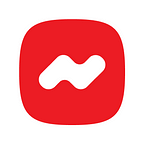UX Challenges in Healthcare
Many businesses, particularly IT corporations, have had a significant impact on their success due to design. However, the design does not yet have a seat at the table in several industries. One of them is healthcare.
New challenges in the healthcare industry accelerate the growth of healthcare development of healthcare innovation.
Their user interfaces are usually outdated and cluttered. Their user experience is perplexing and overpowering. This UX/UI issue is more than just looking “old.” Rather, when compared to other businesses, healthcare software solutions give less value and effectiveness to their key clients.
There’s a big difference between making a simple product & making a product simple — Des Traynor, Co-Founder of Intercom
UX Challenges faced by Healthcare
Bad user experience has infiltrated many areas of healthcare, from hospital administration to health care processes, because even the most experienced nurses were attempting to figure out the monitoring software and missing out on critical information. The poorly designed user interface was a common denominator driving these inexcusable faults.
- Accessibility & Compliance
Web-accessible and compliant healthcare products and services are necessary. It’s difficult to be both accessible and compliant while yet having a unique user interface. One significant constraint of healthcare websites is that users who are blind or visually impaired must be able to access the app or website. To cater to these users, your website and app should be constructed so that they may utilize the tab key on their keyboard to browse to all clickable elements. This alone eliminates certain unique features and limits innovation.
- Interoperability
It refers to a product’s ability to exchange and utilize data. The majority of healthcare applications must communicate with other systems. These are intricate interfaces. To make things easier, several standards have been developed. However, the implementation challenges include a significant amount of time, code overruns, and rework.
- Making users comfortable with healthcare without complex legacy systems
Complicated paperwork and delayed communication have become synonymous with healthcare. For us, the issue is to demonstrate to people that less is more and that this does not have to imply lesser healthcare quality.
- Desire to be Seen as Safe
In general, healthcare brands want to be perceived as trustworthy and dependable. As a result, they lack the motivation that a new product provides to push the UX/UI envelope. Some people may be less trusting of these sites or applications if they appear to be too trendy. Similarly, many healthcare companies are accustomed to designing for senior citizens who prefer a more traditional user experience.
- Delivering simplified information without morphing the critical data
Designing better conversational experiences for patients is one solution to this, as it increases the user’s interest and perception of the product. The designer’s job will be aided by a thorough awareness of the relevant industry, science, and medical, as well as a scientific approach.
- Refrain from inducing anxiety under any circumstance
Complex scenarios and task flow. Good UX in healthcare is easy-to-use, intuitive, and delightful to use products and applications. It is important that the experience one designs should not be complex.
- Helping patients help themselves
- Clinician-Focused
Clinicians may need to access healthcare websites or applications from hospital computers, which are often old machines with their own set of limitations. Each of these challenges is difficult enough on its own, but when you combine them, suddenly you realize that healthcare product managers and marketers face an uphill battle.
- Multiple application occasions
Apps and systems are used at offices, in operating rooms, in an ambulance, in a house and the software has to be adjustable to these diverse.
- Critical Nature of systems
Healthcare systems have to manage matters of life and death, literally. There are cases of UX design in healthcare apps that literally save lives, and this is the factor that can’t be overlooked.
- The fast pace of healthcare domain development
Healthcare is a very dynamic domain with its brand new practices, treatments, and standards appearing with high regularity. Professionals need to be updated, as does their technology. That brings new tasks for the software engineers.
- Data sensitivity
The end-products support a complex decision-making process. Any EHR represents a system for people with diverse backgrounds who are looking, analyzing, and sharing large numbers of sensitive data.
- Big variety of end-users
Clinicians, surgeons, pediatricians, intensive care therapists, ambulatory physicians, nurses, technicians, and patients of various ages and levels of education are among the users of applications, software systems, and platforms.
- Use new technological innovations — wisely!
Cutting-edge sectors like Artificial Intelligence and Augmented Reality offer huge potential for helping us revolutionize healthcare, but we have to be very careful to use and deploy them within the product in a way that truly thrills and adds value to the consumer. The market frequently expects such a product to include these breakthroughs, but our goal is to maintain the customer at the center of everything we do and to only use the power of these new technologies where it helps us serve our consumers better than before.
Salient Points
- User interface and user experience for apps and websites in the healthcare industry must consider disabled people.
- Apps and websites will have to communicate with other systems based on different technologies, this makes interoperability a challenging task.
- Health care Websites and apps are required to be dependable hence there is resistance to pushing new UI, moreover they cater to people of all ages, so balancing between the old and young people is necessary.
- Healthcare systems largely depend on legacy applications that are trusted and dependable, hence a new system will take time to earn the trust of users. This leads to slower replacement of old by new technologies.
- The Healthcare industry handles large amounts of sensitive information so data security is an important aspect.
